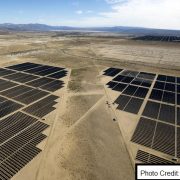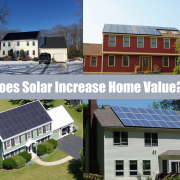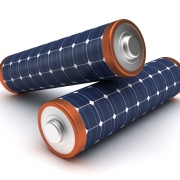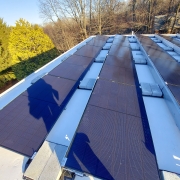Think Wind Turbines And Solar Panels Are Fads? Think Again
By Travis Hoium
June 17, 2017
Read the original article Here
Renewable energy often gets dismissed as a relatively insignificant part of the power picture because it doesn’t generate as much of America’s electricity as coal, natural gas, or nuclear plants. The president of the United States has even said he doesn’t think wind “works,” and he’s certainly no fan of solar energy.
But the opinions that wind and solar are fads, or are too minor to care about, or “don’t work” are simply wrong. In fact, wind and solar will soon overtake nuclear for the percentage of U.S. power they generate, and coal could be next.
Wind and solar are becoming big business
New data from the U.S. Energy Information Administration shows that wind and solar combined to provide 10% of U.S. net electricity generation in March 2017, up from about 1% a decade ago. Wind accounted for 8% during the month and solar accounted for 2%.

(Image Source: U.S. Energy Information Administration)
You can see in the chart that wind power generation has grown by nearly 10 times in the last decade, and solar generation has gone from almost nothing in 2011 to a fairly impressive 2% in March. Solar energy has seasonal swings, but with more installations being completed every month and the summer months being the highest generation, we can expect more records for solar generation as April, May, and June data is reported.
Where the wind blows and the sun shines
The report also showed where wind and solar power was generated in 2016. Some of the states that produce a lot of wind and solar electricity are fairly predictable: California got 20% of its electricity from wind and solar, and Texas got 13% of its electricity from wind (solar was almost negligible in Texas).
But some states that get huge percentages of their electricity from wind and solar may surprise you: Iowa (37%), Oklahoma (25%), North Dakota (21%), and Kansas (30%).
And some surprises went in the other direction: Consider that Arizona only gets 5% of its electricity from wind and solar, despite having one of the best environmental profiles for solar in the country.
Where’s the money in renewable energy?
The rapid growth of wind and solar is good news for the renewable energy industry. On the wind side, fast adoption is propelling a growing business for General Electric (NYSE:GE), though wind remains a small percentage of its business overall. In solar, First Solar (NASDAQ:FSLR) and SunPower (NASDAQ:SPWR) are two of the leading U.S. companies.
But a bet on the continuing and profitable growth of renewable energy, no matter which energy source or what manufacturer, is better made by putting money into utilities. NRG Energy created NRG Yield (NYSE:NYLD) to own most of its renewable projects, while NextEra Energy created NextEra Energy Partners (NYSE:NEP). Those yield co’s have plenty of opportunities for growth, and already hold long-term contracts to sell renewable energy to utilities that ensure dividends for decades to come.
Now that wind and solar are providing 10% of U.S. electricity production, it’s clear that renewable energy is far more than a fad. And the pace of installations is accelerating, despite the fact that government subsidies are being phased out. Wind and solar energy should be taken seriously in the U.S. power picture because their share and impact are only going to grow.
Mark Cuban predicts this will make someone a trillion dollars
Shark Tank’s Mark Cuban recently predicted that an emerging tech trend would make someone $1 trillion. That lucky future trillionaire is just the beginning — and the trend itself could be worth as much as $19.9 trillion.
Fortunately, this hasn’t yet gone mainstream — most people haven’t recognized the scale of opportunity here.
We believe that one market expert has the right answer for investors looking to get in early — and potentially win big.







